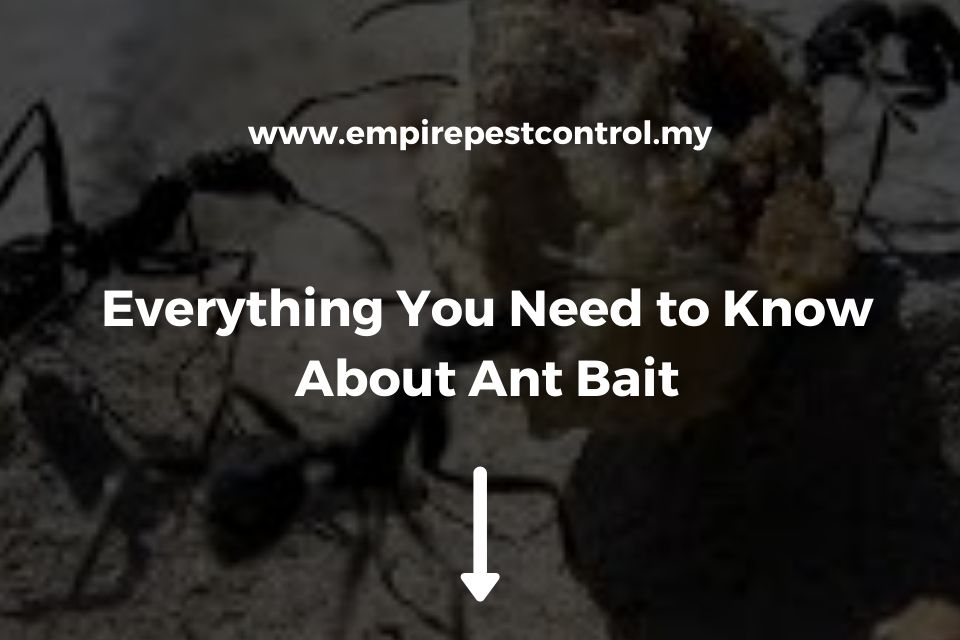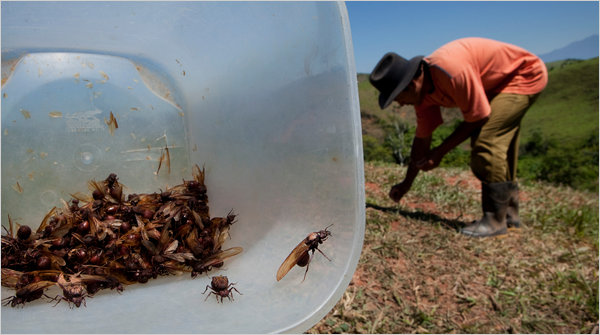Ants can often be a troublesome pest in the home, making it challenging to manage them. Ant bait constitutes a chemical compound that ants carry back to their nest and distribute amongst their colony, effectively eliminating them over time. These bait products have been available for a long time and are offered in various types, including liquid, granule, and gel forms. In this blog entry, we’ll cover all the essential details about ant bait to help you determine the most suitable option for your situation.
PS: If you’re looking for a reliable ant control service provider, then we’re the ones to call! With over years of experience in the field, we’re certain our experts can handle your ant problems, no matter how severe they may be. Reach out today to learn more.
Contents
What Are Ant Baits?
Ants are attracted to sweet food such as sugar, syrups, food crumbs, and grease. Ant traps are mostly used by people because of their effectiveness, and in it comes the ant bait. Ant bait is a chemical substance that ants will take back to the colony and share with other ants, killing them all in time. Ant baits tend to take a long time to work, so ants can make a few more trips from the bait back to the queen ant and eventually eliminate them all.
The Types of Ant Baits
The different types of baits include liquid, granulated, and gel. Liquid formulations of ant bait tend to be more popular because it’s easier for the worker ants to carry back the bait with pesticide into their colonies when compared with dry substances such as granules or gels, which would take a long time to move. Ant baits also have long-lasting or permanent effects on reducing infestation levels.
There are different types of ant bait products that can be used to eliminate ants infestations, such as borate-based products, abamectin products, fipronil products, and hydramethylnon products. You can find these in your local stores.
How Ant Baits Work and Their Effectiveness
Ants are attracted to food, and the sweet smell draws them into the bait. Once they eat it, it travels through their stomach and intestines until reaching the colony, where other ants will feed on that as well.
The worker ant then goes back for more of this substance which contains poison that will spread throughout the entire colony leading to its death over a period of time.
Their effectiveness could take a few days to work, making the worker ants have several trips back to their colony to spread the ant bait, getting rid of the entire colony and not only individual ants.
Where to Apply Ant Baits
Ant baits can be applied to different areas of your home, such as the baseboards, kitchen counters, cabinets, and doorways where ants usually hide. You can also place them near cracks or crevices that might be a hiding spot for these pests to have easy access into your house. You can also check for food sources that ants are gathering and replace the food source with the ant bait.
You need to read product labels carefully before using any ant bait because sometimes they could be dangerous to pets and children if not handled properly. Hence, you must do this first before applying them around your home. Keep in mind to keep the ant bait products away from pets and children.
Tips For Using Ant Baits
When using ant baits, you need to keep in mind that they may cause a mess by attracting ants if they’re not used properly. Ants will also try and avoid the bait because of its smell, so placing some on areas where they hide is important for them to be attracted to it more quickly.
You can put out several types of traps around your home instead of just one type as well, which could make it easier for these pests to get rid of them faster since there are different food sources available at once.
Lastly, clean up any spills from the ant bait or dead ants after application with a damp cloth and then disinfectant wipe. Be sure to wash hands thoroughly when handling any ant products before into contact with children or pets.
In Conclusion
We hope you enjoyed learning about the different types of ant bait and how to use them. If you need any more help, feel free to reach out! We are always happy to answer your questions or offer suggestions for using this information in a way that best suits your needs.




